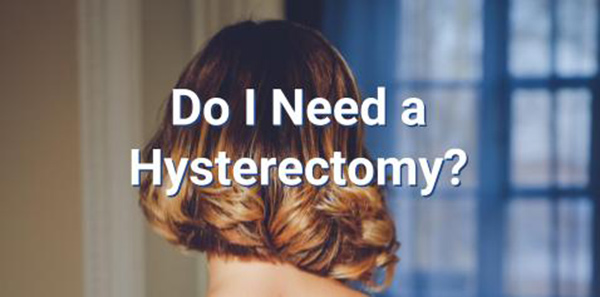
The decision to have a hysterectomy should never be taken lightly.
Hysterectomies used to be the only option for the treatment of many diseases of the cervix. Now there are alternative treatments with fewer side effects and less harmful long-term consequences.
When What are the different types of hysterectomy?
- A partial hysterectomy is a procedure that removes the uterus but leaves the cervix in place.
- A radical hysterectomy is a procedure where the uterus, cervix, upper vagina, fallopian tubes and ovaries (parametrium) are removed in their entirety to treat cervical or uterine cancer.
- A total or complete hysterectomy involves removing the cervix as well as the uterus (womb).
Can you have a laparoscopic hysterectomy?
The total laparoscopic hysterectomy is done by inserting a laparoscope and surgical instruments through several small incisions in the abdomen. The uterus and the cervix are removed in small pieces through one of the incisions. It can be performed to remove uterine fibroids that are small to moderate in size.
Why Consider an Alternative to Hysterectomy?
A hysterectomy not only closes the door to childbirth, it can have other repercussions, beyond the risks posed by any surgery. Such effects are: vaginal dryness, mood swings and the hot flushes of menopause if the ovaries are also removed; impact sexual pleasure, particularly uterine orgasm; bladder and intestinal changes; and provoke emotional distress and depression.
When is a Hysterectomy the Only Choice?
A hysterectomy can alleviate the pain, pressure and bleeding caused by conditions of the uterus, and many women are pleased with the result afterwards, the pros and cons of surgery must always be carefully weighed. Sometimes a hysterectomy may be the only choice if a woman has cancer of the uterus, ovary, cervix, or endometrium.
When would it be necessary to have a hysterectomy?
Some common reasons for a hysterectomy are:
- Uterine fibroids that cause pain or heavy periods
- Bleeding including excessively heavy periods
- Endometriosis causing pelvic pain
- Adenomyosis
- Unsuccessfully treated pelvic inflammatory disease (PID)
- Uterine prolapse, which is a sliding of the uterus from its normal position into the vaginal canal.
- Cancer of the uterus, cervix, or ovaries.
So how should women and their doctors decide?
It is a complex judgment call and depends on
- why a hysterectomy is being considered,
- the type of hysterectomy offered,
- a woman's goal for treatment, and
- her willingness to tolerate side effects or symptoms.
Alternatives to Hysterectomy
 Watchful Waiting
Watchful Waiting
If your fibroids are causing no symptoms, it's entirely reasonable to adopt a strategy called "watchful waiting"- monitoring their status with your doctor and not having any surgery unless problems develop.
But if you are experiencing pain, discomfort, or pressure, there are several less-invasive options for treating fibroids.
Myomectomy
This is the surgical removal of the fibroids alone. It can be done through an abdominal operation, laparoscopically (entering through the navel).
A laparoscopic is least invasive, and is less costly and requires shorter recovery time.
Hysteroscopy
The insertion of a thin, telescope-like instrument through the vagina can be used if the fibroid is primarily within the cavity of the uterus.
This is a minor surgical procedure with minimal recuperation time, but can only be offered to women who have fibroids within the lining of the uterine cavity.
Uterine artery embolization (UAE)
Also known as uterine fibroid embolization (UFE). This is a fairly simple, noninvasive procedure in which small particles are injected into the uterine arteries feeding the fibroids, cutting off their blood supply.
Unlike a hysterectomy, this procedure preserves the uterus and helps women potentially avoid surgery. It's been used for years to help stop hemorrhage after childbirth or surgery. Symptoms improve in 85% to 90% of patients, most of them significantly.
Medical management
Painful symptoms of uterine fibroids can be initially treated with nonsteroidal anti-inflammatory drugs (NSAIDs), like Motrin. If that isn't effective, another option is a class of drugs that blocks the ovaries' production of estrogen and other hormones. Their side effects can include symptoms of premature menopause and a decrease in bone density. This is done only prior to scheduled fibroid removal, not long term. The fibroids will grow again after therapy is stopped.






